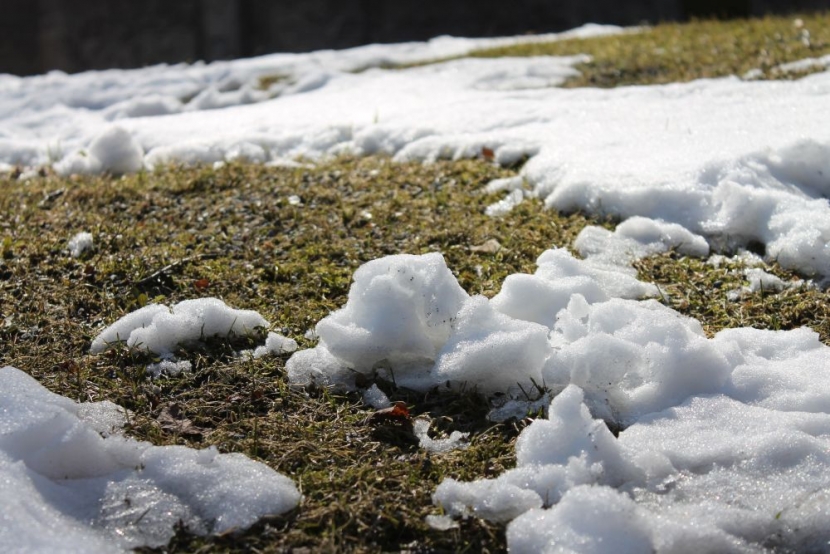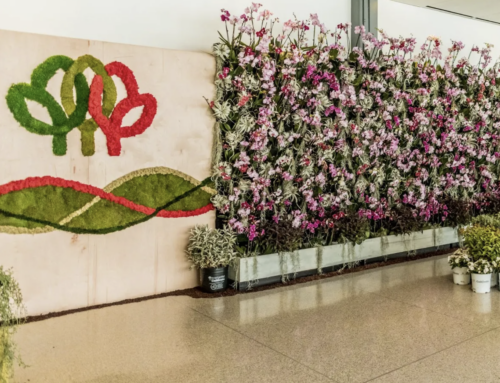Though we’ve had a few inspirational, warm days (40+ F) in western Michigan, in many areas we still have 7-10” of snow cover. While the winter snow persists and our nights continue to drop in the low 20’s, we’re still looking for signs of life in the winter garden.
The amazing capacity of trees to handle snow-loading
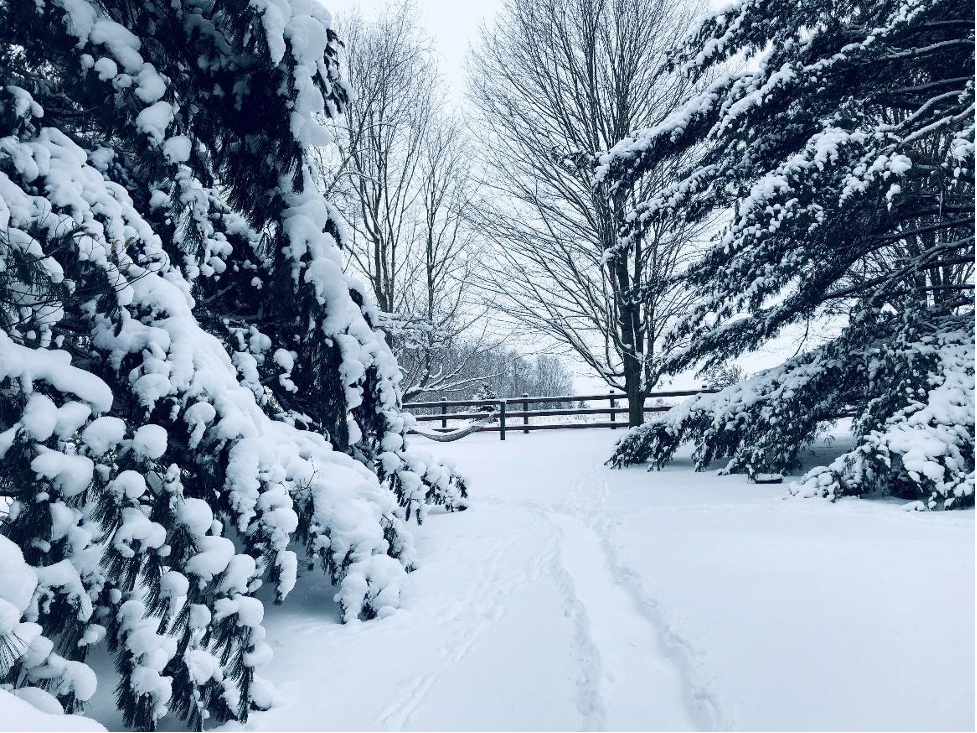
Native Eastern White Pines (Pinus strobus) following a wet and heavy snowfall
For most of the year, the long branches of the White Pines pictured here grow horizontally, with some extending out over 25’. Depending on the type of snow that falls (usually determined by the percentage of moisture), the snow adheres to the pine needles and as the weight builds up, the branches gracefully bend downward.
In this case, branches that I can typically walk beneath, as in over my head – here they touch the ground. Not all trees can tolerate this weight load stress. Depending on the volume of snow, how heavy (wet) and how fast it comes down can determine if the branches break or not.
That often-hyped-winter-attraction quality of ornamental grasses
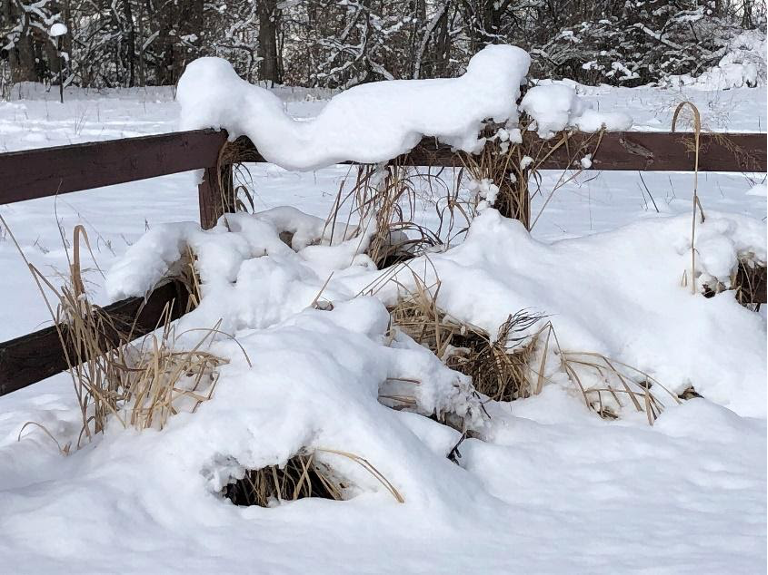
Mixture of Switch Grass and Little Bluestem lost beneath the heavy snow.
Usually, I encourage gardeners to not cut down their tall ornamental grasses and allow them to persist through the winter. Considering the times when there is no snow cover, the landscape is often brown and gray. As the grasses dry in the fall, most take on a light straw color. In recent years with some species of native prairie grasses (Switch Grass and both Little and Big Bluestem), new varieties have been found which retain a red or blue hue into winter.
Add a breeze to these tall dry stalks and movement comes to what might have been a dull landscape. But then there’s the heavy snow factor. By about late February or March, many of the ornamental grasses in the snow-belt of Michigan have lost the fight. The ornamental grass grouping seen here once stood tall and proud above the 4’ fence. The last snow blows knocked them down and out, like a losing boxer who slumps into the corner.
Large old trees that stand like stone monuments in the winter
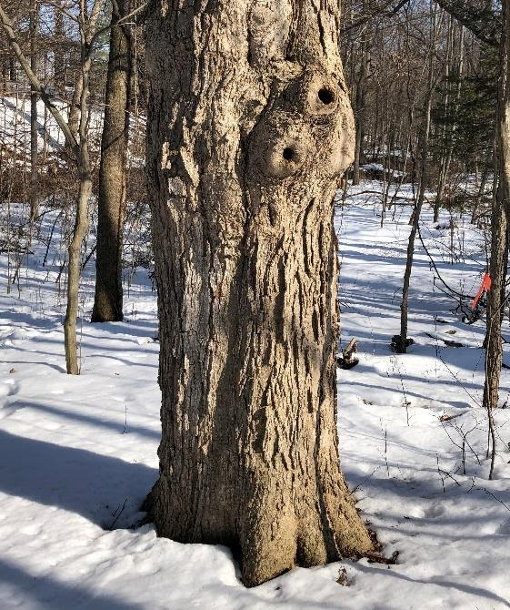
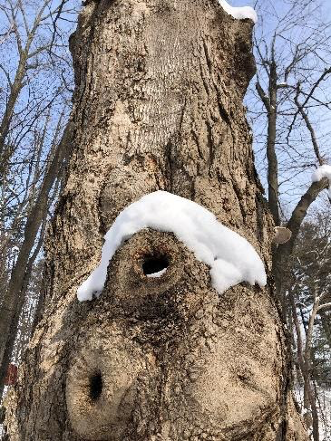
Two of many holes in an old Sugar Maple tree
Though the large trees may look cold and dormant, especially those with hollow cavities can be teeming with life inside. Such is the case with this large Sugar Maple that is speckled with occasional holes from the base to the top. Periodically, we see squirrels and woodpeckers make good use of the shelter this tree provides throughout the winter. Regardless of having numerous hollow chambers, it continues to grow quite well each year putting out a full canopy of leaves.
Critter Tracks
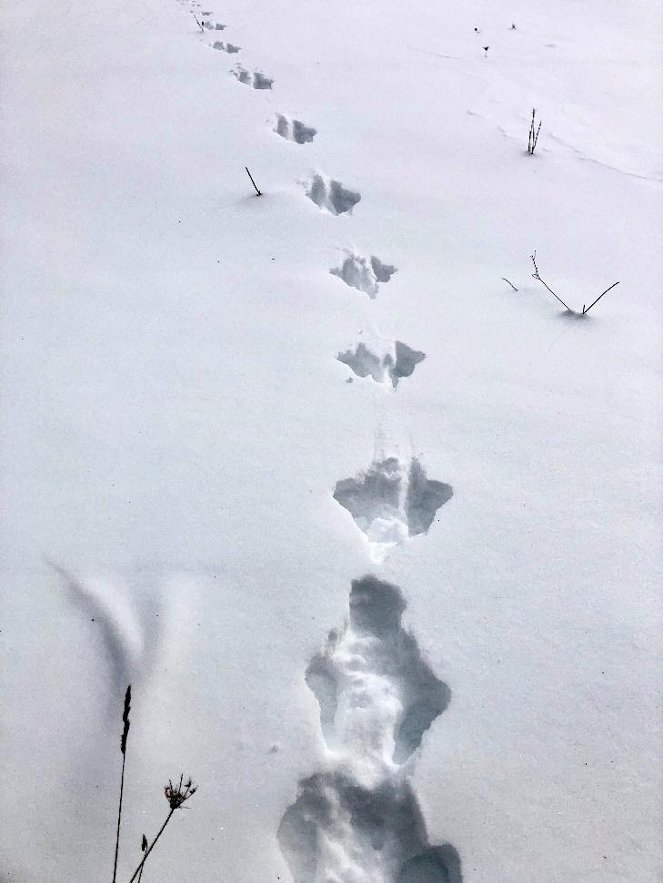
It is a bit difficult to identify these tracks distorted by the crusted snow, but this is probably a squirrel hopping in a hurry.
If we ever wondered if there is animal activity in our yard either when not home or at night, a good snow reveals evidence of their presence. Use the snow to see what animals have been in your yard and what they were looking for. That can be good insight so when the snow is gone and signs of damage occurs, it might help identify the culprit. It was discouraging that there were few if any flowers on our young magnolia tree. The snow revealed deer tracks leading to the tree. The deer were eating the flower buds off the branches each winter. Now we fence off the magnolia prohibiting the deer browsing and enjoy the flowers each spring.
If it wasn’t for a little moss, there wouldn’t be much green to be seen in the winter garden.
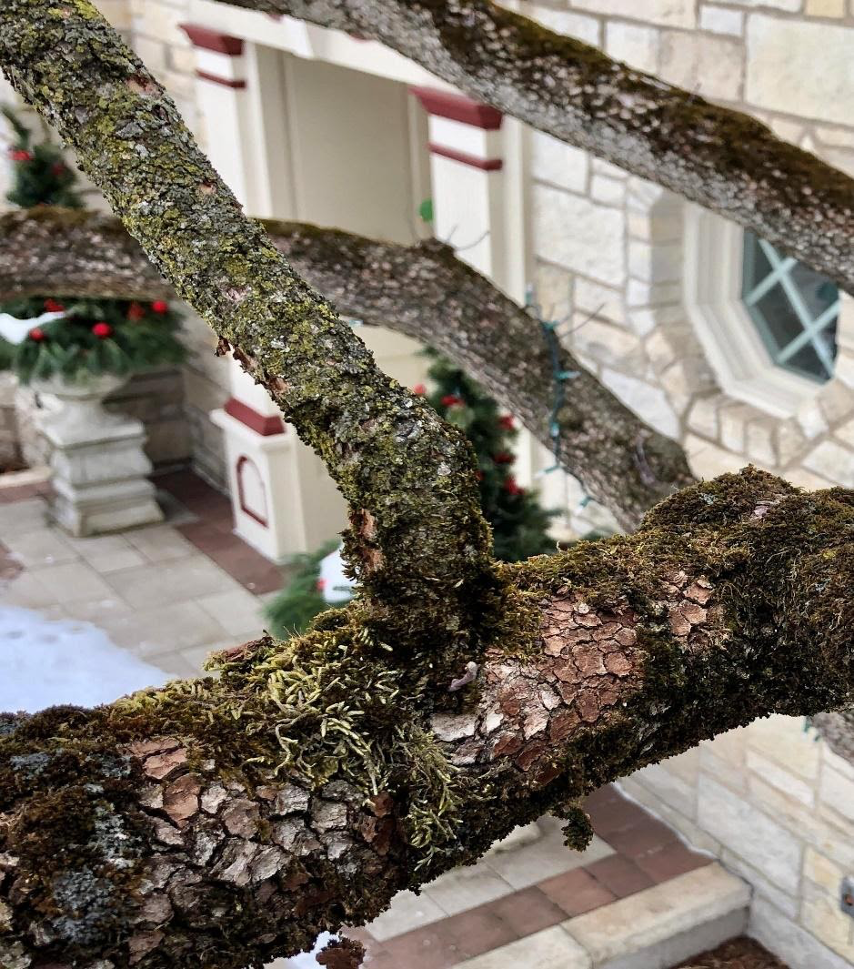
Moss growing on an old dogwood is harmless and adds to the character of its appearance.
Caught in the deep-freeze while visiting in Texas
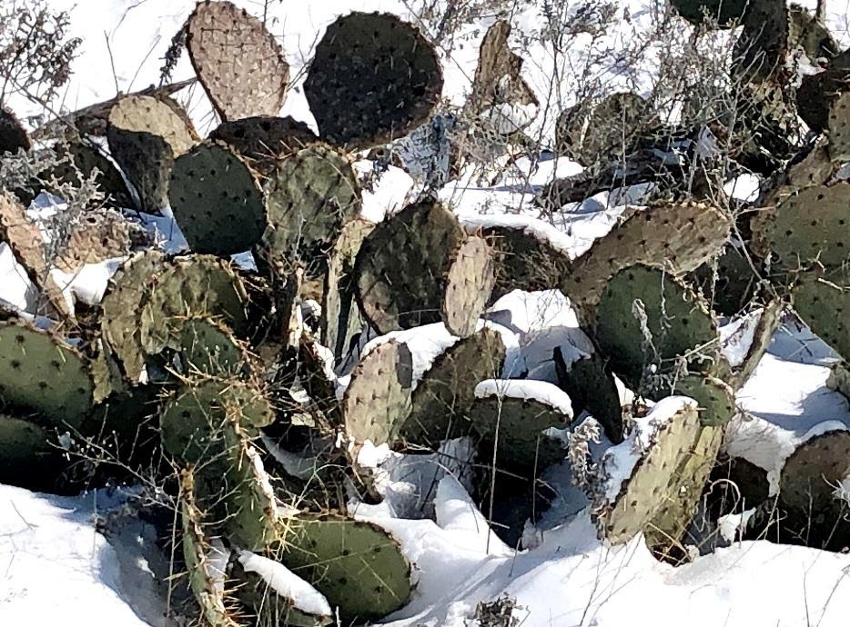
Prickly Pear Cactus enduring snow and sub-zero temperatures.
It is a considerable contrast to witness plants that have no problem under the summer sun in 105 F being smothered by a polar freeze. Yet that temperature extreme is what hit many states in the Midwest a couple of weeks ago. Though weather like this is uncommon, these cacti are native to Texas, and they’ve endured cold before. From my observation, no freeze damage was evident on the plants. Texas tough, I guess.
Finally, the Patron Saint of Gardeners makes an appearance.
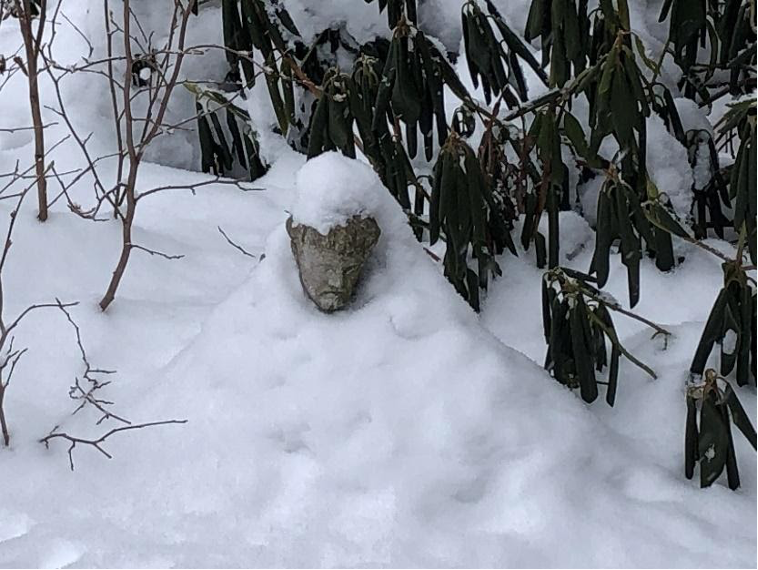
Buried beneath the snow by the Rhododendrons, the head of the St Francis of Assisi statue is evident with the receding snow.
Please feel free to contact me with any questions or for more info at: [email protected]
Connect with us on social media!

